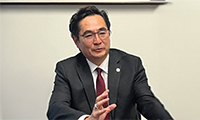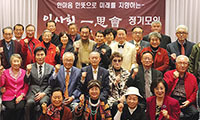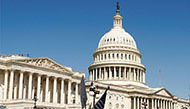▶ Post-Meltdown, Traders Gain an Edge in Milliseconds
IT IS THE hot new thing on Wall Street, a way for a handful of traders to master the stock market, peek at investors’ orders and, critics say, even subtly manipulate share prices.
It is called high-frequency trading - and it is suddenly one of the most talked-about forces in the markets.
Powerful computers enable highfrequency traders to transmit millions of orders at lightning speed and, their detractors contend, reap billions at everyone else’s expense.
Nearly everyone on Wall Street is wondering how hedge funds and large banks like Goldman Sachs are making so much money so soon after the financial system nearly collapsed. Highfrequency trading is one answer. Goldman acknowledges that it profits from high-frequency trading, but disputes that it has an unfair advantage.
Yet high-frequency specialists clearly have an edge over typical traders, let alone ordinary investors. The United States Securities and Exchange Commission says it is examining certain aspects of the strategy.
“This is where all the money is getting made,” said William H. Donaldson, former chairman and chief executive of the New York Stock Exchange. “If an individual investor doesn’t have the means to keep up, they’re at a huge disadvantage.” In 1998, the Securities and Exchange Commission authorized electronic exchanges to compete with marketplaces like the New York Stock Exchange. The intent was to open markets to anyone with a computer and an idea.
But as new marketplaces have emerged, powerful algorithms execute millions of orders a second while scanning dozens of marketplaces. They can spot trends before other investors can blink.
Loopholes in market rules also give high-speed investors an early glance at how others are trading. And their computers can essentially bully slower investors into giving up profits before anyone even knows they were there.
High-frequency traders also benefit from competition among the various exchanges, which pay small fees that are often collected by the biggest and most active traders - typically a quarter of a cent per share. Those small payments, spread over millions of shares, help high-speed investors profit simply by trading enormous numbers of shares, even if they buy or sell at a modest loss.
“It’s become a technological arms race, and what separates winners and losers is how fast they can move,” said Joseph M. Mecane of NYSE Euronext. “Markets need liquidity, and high-frequency traders provide opportunities for other investors to buy and sell.”
To understand this high-speed world, consider what happened when slow-moving traders went up against high-frequency robots.
It was July 15, and Intel, the computer chip giant, reported robust earnings the night before. Some investors set out to buy shares in the semiconductor company Broadcom. The slower traders faced a quandary: If they sought to buy a large number of shares at once, they would risk driving up Broadcom’s price. So they divided their orders, hoping to cover their tracks. One second after the market opened, shares of Broadcom started at $26.20.
The slower traders began issuing buy orders, but some of those were most likely routed to a collection of high-frequency traders for just 30 milliseconds. While markets are supposed to show orders to everyone simultaneously, a loophole in regulations allows marketplaces like Nasdaq to show traders some orders ahead of everyone else in exchange for a fee.
In less than half a second, highfrequency traders gained a valuable insight: the hunger for Broadcom was growing. Their computers began buying up Broadcom shares and then reselling them to the slower investors at higher prices. The overall price of Broadcom began to rise.
Automatic programs began issuing and canceling tiny orders within milliseconds to determine how much the slower traders were willing to pay. The high-frequency computers determined that some investors’ upper limit was $26.40. The price shot to $26.39.
The result is that the slower-moving investors paid $1.4 million for about 56,000 shares, or $7,800 more than if they had been able to move as quickly as the high-frequency traders.
Multiply such trades across thousands of stocks a day, and the profits are substantial.
“You want to encourage innovation, and you want to reward companies that have invested in technology and ideas that make the markets more efficient,” said Andrew M. Brooks, head of United States equity trading at T. Rowe Price. “But we’re moving toward a two-tiered marketplace of the high-frequency arbitrage guys, and everyone else. People want to know they have a legitimate shot at getting a fair deal. Otherwise, the markets lose their integrity.”
스마터리빙
more [ 건강]
[ 건강]이제 혈관 건강도 챙기자!
[현대해운]우리 눈에 보이지 않기 때문에 혈관 건강을 챙기는 것은 결코 쉽지 않은데요. 여러분은 혈관 건강을 유지하기 위해 어떤 노력을 하시나요?
 [ 건강]
[ 건강]내 몸이 건강해지는 과일궁합
 [ 라이프]
[ 라이프]벌레야 물럿거라! 천연 해충제 만들기
 [ 건강]
[ 건강]혈압 낮추는데 좋은 식품
[현대해운]혈관 건강은 주로 노화가 진행되면서 지켜야 할 문제라고 인식되어 왔습니다. 최근 생활 패턴과 식생활의 변화로 혈관의 노화 진행이 빨라지고
사람·사람들
more많이 본 기사
- 스위스 스키휴양지 화재 사망 약 40명, 부상은 115명
- 뉴욕시장 취임 맘다니 “새 시대 시작…대담하게 시정 펼칠 것”
- ‘SNS 검증’ 美 비자심사 지연에 원격근무까지 시행하는 빅테크
- 美, 中 대만포위훈련에 “무력·강압통한 일방적 현상변경 반대”
- “오픈AI, 말로 구동하는 AI기기 준비중…음성AI 고도화 매진”
- 트럼프, 자신 비판해온 배우 클루니 佛국적 취득에 “굿뉴스”
- 보아 없는 SM, 상상 가능할까.. ‘25년 동행’ 거취에 쏠린 관심
- 방탄소년단 뷔, 佛 베르사유 궁전에 ‘영원한 발자취’..헌정 벤치 영구 보존
- 멕시코, 미국서 수배한 마약 카르텔 우두머리급 체포
- 평통 큰 기대속 2025년 마감...시애틀협의회 분과위원회 워크숍 통해 사업 및 활동방향 모색
- LA 올림픽, 도시 전체가 경기장… 한인타운 인근서도 경기
- 신화 이민우, 두 딸과 함께.. “나를 찾아와준 보물들”
- 식당 가면 4% 음식세 더 내야
- 트럼프 “워싱턴 개선문 건설, 두달내 시작…아주 훌륭할 것”
- 스페이스X·오픈AI·앤스로픽, 역대 최대급 IPO 예고
- 팔순앞둔 트럼프, 건강논란 거듭 일축 “검사받아 괜히 의혹키워”
- 머스크의 뉴럴링크, 새해부터 뇌-컴퓨터 연결장치 대량생산
- 말리·부르키나파소 “미국인 오지마”…美입국 금지에 맞불
- 빅뱅 출신 탑, 2026년 가수로 전격 컴백
- 건강보험 보조금 종료…중간선거 낀 새해 최대 정치쟁점으로
- 한인 음악인들 ´희망의 선율´ 병오년 새해 밝힌다
- 남궁옥분 “故 송도순, 열흘 전부터 혼수상태..큰 별 졌다”
- 젤렌스키 “평화협정까지 10% 남아…약한 협정엔 서명 안해”
- 지방세 공제한도 1만→4만달러로 상향 1
- 베네수엘라, 美압박에 맞서 미국인 구금…최소 5명 체포
- ‘메시보다는 손흥민과...’ 美 전역 SON에 푹 빠졌다! 무려 500명 대상 ‘가장 뛰고 싶은 팀’ LAFC 선정
- 워싱턴VA대, 88만 달러 그랜트 받아
- ‘2025 WS 우승’ 김혜성 새해 인사 “언제나 최선을 다하는 선수될 것→응원 너무 감사드린다”
- 새로운 여명… 이제 다시 희망이다
- [미리 보는 2028년 LA 하계올림픽] 역대 최대 규모… LA, 전 세계 스포츠 ‘메카’로
- VA, 새해부터 스팸 전화·문자 강력 규제
- [미주 한국일보 2026년 연중 기획 사업] 매년 풍성하고 유익한 행사… 올해도 한인사회와 함께
- [2026 북중미 월드컵 상금은] 6억5천만달러 ‘돈 잔치’… 우승하면 5천만달러
- [새해 정치 풍향계… 2026 중간선거 전망] 트럼프 2기 중간평가의 시간… 민심은 어디로
- 재외동포, 2년 새 7만5천명 줄었다…181개국에 700만 명 거주
- 영킨 주지사, 620만 달러 직업훈련 지원 발표
- 2025년 작별 고한 한인사회 원로들
- [새해 암호화폐 시장은 어디로- 현황과 전망] “낙폭 뒤의 기회” vs.“불확실성 당분간 지속될 것”
- 미국내 한인 225만명…다소 줄어...재외동포 181개국에 700만명, 2년새 7만5,000명 감소
- 2025년 MD 한인사회 10대 뉴스
- 첫 무슬림 뉴욕시장 맘다니 취임…쿠란 위에 손 얹고 선서
- SF 상공회의소 차기회장에 그린장 SF한인회 부회장
- 유승민, ‘李정부 총리 제의설’ 확인… 2
- 2026 북중미 월드컵에서 사용될 공인구는 ‘트리온다’
- [말띠 독자들의 새해 소망·다짐] ‘붉은 말’처럼 역동적으로… 힘찬 도약과 성취를
- 홀인원-MD 80세 오차환 씨
- 아듀! 2025년
- “박나래 술잔에 맞아 4바늘 꿰매”..전 매니저, 경찰에 상해진단서 제출
- 이혜훈 ‘보좌진 갑질’ 녹취 폭로…국… 2
- “오직 십자가의 주님을 따르겠다”
1/5지식톡

-
 미 육군 사관학교 West Poin…
0
미 육군 사관학교 West Poin…
0https://youtu.be/SxD8cEhNV6Q연락처:wpkapca@gmail.comJohn Choi: 714-716-6414West Point 합격증을 받으셨나요?미 육군사관학교 West Point 학부모 모…
-
 ☝️해외에서도 가능한 한국어 선생님…
0
☝️해외에서도 가능한 한국어 선생님…
0이 영상 하나면 충분합니다!♥️상담신청문의♥️☝️ 문의 폭주로 '선착순 상담'만 진행합니다.☎️ : 02-6213-9094✨카카오톡ID : @GOODEDU77 (@골뱅이 꼭 붙여주셔야합니다…
-
 테슬라 자동차 시트커버 장착
0
테슬라 자동차 시트커버 장착
0테슬라 시트커버, 사놓고 아직 못 씌우셨죠?장착이 생각보다 쉽지 않습니다.20년 경력 전문가에게 맡기세요 — 깔끔하고 딱 맞게 장착해드립니다!장착비용:앞좌석: $40뒷좌석: $60앞·뒷좌석 …
-
 식당용 부탄가스
0
식당용 부탄가스
0식당용 부탄가스 홀세일 합니다 로스앤젤레스 다운타운 픽업 가능 안녕 하세요?강아지 & 고양이 모든 애완동물 / 반려동물 식품 & 모든 애완동물/반려동물 관련 제품들 전문적으로 홀세일/취급하는 회사 입니다 100% …
-
 ACSL 국제 컴퓨터 과학 대회, …
0
ACSL 국제 컴퓨터 과학 대회, …
0웹사이트 : www.eduspot.co.kr 카카오톡 상담하기 : https://pf.kakao.com/_BEQWxb블로그 : https://blog.naver.com/eduspotmain안녕하세요, 에듀스팟입니다…
케이타운 1번가
오피니언
 정숙희 논설위원
정숙희 논설위원샴페인, 마지막 날과 첫날을 위하여
 조지 F·윌 워싱턴포스트 칼럼니스트
조지 F·윌 워싱턴포스트 칼럼니스트 [조지 F. 윌 칼럼] 저무는 2025년에 안도의 한숨
 김동찬 시민참여센터 대표
김동찬 시민참여센터 대표 [미국은 지금] 책임 있는 자본 없으면 커뮤니티 미래도 없다
 성영라 수필가 미주문협 부이사장
성영라 수필가 미주문협 부이사장 [수요 에세이] 다시, 제자리로 돌아와서
 신경립 / 서울경제 논설위원
신경립 / 서울경제 논설위원 [만화경] 경영자의 ‘문제적’ 사과
 문태기 OC지국장
문태기 OC지국장 한인 정치력 업그레이드 기대
 민경훈 논설위원
민경훈 논설위원세계 역사를 바꾼 동물
 박홍용 경제부 차장
박홍용 경제부 차장 한인사회가 주목해야 할 새해 경제
 박영실 시인·수필가
박영실 시인·수필가 [화요칼럼] 피드백
1/3지사별 뉴스

지방세 공제한도 1만→4만달러로 상향
2026년 새해에도 뉴욕과 뉴저지 한인들의 일상에 크고 작은 영향을 미치는 다양한 규정과 법규가 새롭게 바뀌게 된다. 당장 1일부터 뉴욕시 최…
■ 사고- 한동대·뉴욕한인청소년센터 국제여름캠프

식당 가면 4% 음식세 더 내야
2026년 1월1일부터 페어팩스 카운티 내 모든 음식점과 레스토랑에서 4%의 음식세(Food and Beverage Tax)가 새롭게 부과된다…
VA, 새해부터 스팸 전화·문자 강력 규제

‘붉은 말의 해’ 열리다
‘붉은 말의 해’를 알리기 위해 서울에서는 제야의 종이 울리고 부산에서는 화려한 드론쇼가 펼쳐지는등 세계 각국에서 새해를 맞이했다. 2026년…
권혁인 목사 /UMC 한인총회장 /산타클라라 연합감리교회

오늘 하루 이 창 열지 않음 닫기 






















































.png)


댓글 안에 당신의 성숙함도 담아 주세요.
'오늘의 한마디'는 기사에 대하여 자신의 생각을 말하고 남의 생각을 들으며 서로 다양한 의견을 나누는 공간입니다. 그러나 간혹 불건전한 내용을 올리시는 분들이 계셔서 건전한 인터넷문화 정착을 위해 아래와 같은 운영원칙을 적용합니다.
자체 모니터링을 통해 아래에 해당하는 내용이 포함된 댓글이 발견되면 예고없이 삭제 조치를 하겠습니다.
불건전한 댓글을 올리거나, 이름에 비속어 및 상대방의 불쾌감을 주는 단어를 사용, 유명인 또는 특정 일반인을 사칭하는 경우 이용에 대한 차단 제재를 받을 수 있습니다. 차단될 경우, 일주일간 댓글을 달수 없게 됩니다.
명예훼손, 개인정보 유출, 욕설 등 법률에 위반되는 댓글은 관계 법령에 의거 민형사상 처벌을 받을 수 있으니 이용에 주의를 부탁드립니다.
Close
x